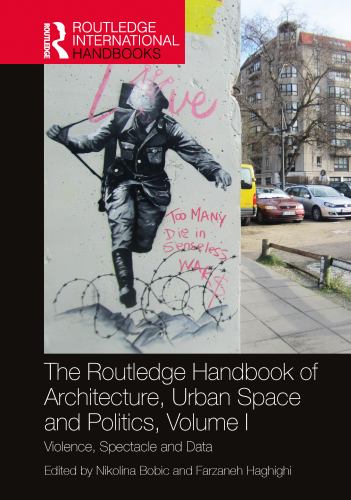CHAPTER
Shiloh Krupar, 2022, “Brownfields as Climate Colonialism: Land Reuse and Antiracist Soil Exegesis,” in The Handbook of Architecture, Urban Space and Politics, eds. Nikolina Bobic and Farzaneh Haghighi (Routledge, 2022), 446-462
ABSTRACT:
This chapter considers the role of architecture in the racial politics of contaminated land frontier and the violence that redevelopment projects involve. It employs a geopolitical lens domestically and internationally on the racialized operations and impacts of land reuse; it shows how colonial power relations mark these development projects wrought within US empire, and calls for transnational studies of land conversions. By basing the discussion of brownfields in early US policy context, the first section considers how brownfield projects implement specialized appraisal techniques, including spatial demarcation and accounting produced by Geographic Information Systems (GIS) databases and other forms of data optimized for capital planning. Turning next to the Pentagon’s role as a major contributor to global climate change, the second section addresses brownfield land reuse associated with US military base conversions. The chapter analytically moves from domestic bases to an historically prominent overseas base to reveal racialized inequality linked to military land reuse projects that equivocate the relationship between environmental sacrifice and spectacle. Domestically, base conversions aver the return of military land to public use yet frequently entail massive state-subsidized private redevelopments that offload pollution on marginalized populations. Within conditions of dependency and debt tied to military occupation, former overseas US military bases offer the grounds for spectacular development projects in ways that illuminate the highly racialized and militarized context of brownfield projects in the US: overseas base conversions often take the form of foreign tourism and investment zones that promise trickle-down benefits to local populations. In the context of the Global South, the US military eschews the application of US environmental regulatory structures through claims of extraterritoriality, extending a transnational sacrifice zone of US Defense that exacerbates the kinds of negative effects seen in the domestic context of land reuse projects. The politics of blight and climate collapse explored in the chapter shows the need for antiracist South–South studies of the inequalities and racial differentiation that mark land conversion in the Global South and the postindustrial austerity conditions of the Global North – from racist eco-gentrification to biodiversity development aesthetics that obscure contamination.

The Handbook of Architecture, Urban Space and Politics, eds. Nikolina Bobic and Farzaneh Haghighi (Routledge, 2022)
Thumbnail image credit: Biomuseo canopy, Panama City, Panama. Architect: Frank O. Gehry. Photograph by F. Delventhal, 2017. CC-BY-2.0.